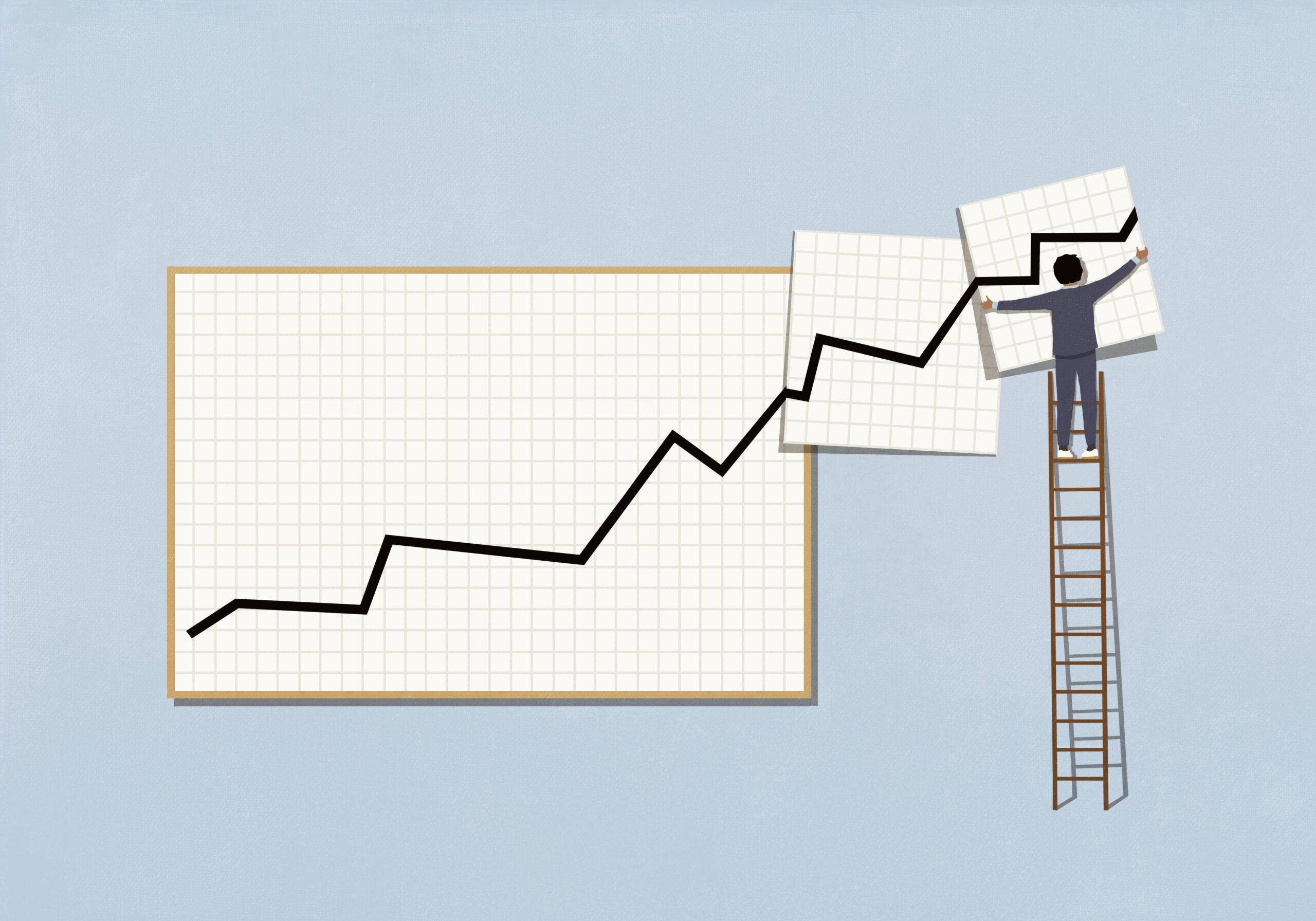“There’s one aspect of MMT that I have some sympathy for: the notion that what we spend money on is far more important than how we finance it.” — Cliff Asness
Amid resurgent and persistent inflation, much of the bloom, such as it was, is off the modern monetary theory (MMT) rose. The US Federal Reserve raised interest rates by 75 basis points (bps) on 21 September in what is just the latest step in its tightening cycle. In the face of the CPI numbers for August, which showed inflation at 8.3%, further rate hikes are hardly off table. These developments couldn’t have been anticipated in October 2021, when the Equity Risk Premium Forum discussion was held; nevertheless, the perspectives on MMT and many other topics, shared by Rob Arnott, Cliff Asness, Mary Ida Compton, William N. Goetzmann, Roger G. Ibbotson, Antti Ilmanen, Martin Leibowitz, Rajnish Mehra, Jeremy Siegel, and Laurence B. Siegel, are still relevant.
Their assessment of MMT was ambivalent at best. Arnott declared that far from having the redistributive effect envisioned by its proponents, MMT policies simply make the rich richer.
From there, panelists reflected on their 10-year predictions from the 2011 forum for the realized equity risk premium (ERP). All their forecasts vastly underestimated the actual figure.
Before concluding the forum, they returned to the nature of the ERP and whether it is an actual “risk” premium. Ibbotson suggests that “One possibility would be that stocks are perceived as being much riskier than they are,” while Jeremy Siegel theorizes that “It could be the Tversky–Kahneman loss aversion explanation. . . . People react asymmetrically to losses versus gains.”
Below is a lightly edited transcript of the final installment of their discussion.
Roger G. Ibbotson: Does anybody here have an opinion, a positive opinion, about MMT? It seems to have taken over the government and the Fed really. Does anybody think there’s something positive to that?
Rob Arnott: We at Research Affiliates have a draft paper that Chris Brightman wrote a year ago, and he hasn’t published it because he was worried about upsetting clients in the middle of the COVID pandemic. The paper shows that there’s a direct link between deficits and corporate profits. That is to say, a trillion dollars of deficit spending goes hand in hand with a trillion dollars of incremental corporate profits over the next four years. This relationship has a theoretical basis that would take too long to get into right now. In any event, the implication is that if you pursue MMT, you’re going to be enriching the people who you’re ostensibly looking to “milk” with the intent of enriching the poor and the working class.
Laurence Siegel: I think most of us knew that. We just couldn’t prove it. I’d love to read Chris’s paper.
Cliff Asness: That’s the verdict on quantitative easing for 10 years now. Let me say something about MMT. There’s one aspect of MMT that I have some sympathy for: the notion that what we spend money on is far more important than how we finance it. The one good point in MMT, which they don’t stress enough, is this: If the government did much less and charged zero tax rates, so that there was a big deficit, the libertarian in me would think that’s a good world. And if the government spent a ton of money and fully financed it with taxes, I might think that’s a bad world. I think MMT does make that distinction. I just then make every policy choice opposite from them.
Arnott: The level of taxation is not the taxes we pay. It’s the money that we spend. Because whatever is spent is either coming out of tax revenues or pulled out of the capital markets through running deficits and increasing the debt. The money is being pulled out of the private sector in both cases. So, spending sets the true tax rate and is what’s disturbing about a $3- to $5-trillion deficit.

Remembrance of Forecasts Past
Rajnish Mehra: Larry, after the last forum in 2011, you sent an e-mail with everybody’s forecast for the equity premium.
L. Siegel: It was an e-mail with all the forecasts from 2001, so we could compare our then-current (2011) forecasts with the old ones (2001). I don’t have a record of the forecasts from 2011. Sorry. But I do remember that Brett Hammond gave a talk at the Q Group in 2011 where he said that all the 2011 forecasts were very close to 4%.
Ibbotson: I missed the last forum because of a snowstorm, but I think markets exceeded almost everybody’s expectations.
L. Siegel: They sure did.
Ibbotson: So, it doesn’t matter what we said. Whatever the forecasts were, the market did better. The person who had the highest estimate, won.
Jeremy Siegel: And, by the way, I would say that bonds did much better than everyone predicted. Stocks and bonds both exceeded expectations over the last 10 years.
Martin Leibowitz: My recollection — I could be wrong, and you’ll correct me on this, Larry — was that the numbers ranged from a 0% risk premium up to around 6%, with an average of 3.5% to 4%. It’s very interesting how those forecasts correlate with a lot of the numbers we’ve been bouncing around today, with very different types of explanations for how we got there.
L. Siegel: Marty, those were the forecasts in the 2001 forum, the first one. In the 2011 forum, the estimates were all very close to 4%.
Looking at the 2001 (20 years ago) forecasts, the lowest was Rob’s, and it was zero. But these were not 20-year forecasts; they were 10-year forecasts. The highest forecast was that of Ivo Welch, but the highest forecast from among those present today was Roger’s. Congratulations, Roger.

Ibbotson: Whoever was highest, won. There was nothing especially prescient about my forecast. Also, we should repeat that these were 10-year forecasts made 20 years ago. Apparently, Larry doesn’t have the 2011 forecasts handy.
L. Siegel: No, I don’t. I’m sorry.
J. Siegel: I forget what mine was. Was mine 4.5% or 5%? I forget.
L. Siegel: Jeremy, yours was 3% to 4%.
Leibowitz: What was Roger’s?
L. Siegel: 5%.
Leibowitz: That was the highest?
L. Siegel: Ivo Welch gave 6% to 7%.
Antti Ilmanen: Did we specify what maturity bond?
L. Siegel: A 10-year bond.
J. Siegel: What is the right answer?
Mary Ida Compton: Do you mean, what actually happened?
J. Siegel: What was the last 10 years’ realized equity risk premium, and what was the last 20 years’ realized premium?
Compton: I have the 10-year numbers here. For the 10 years ended September 2021, the S&P 500 returned 16.63%, compounded annually. Long Treasuries returned 4.39%.
L. Siegel: So the realized 10-year equity risk premium from 30 September 2011 to 30 September 2021 was 1.1663/1.0439 – 1 = 11.73%.
Over the 20 years from 30 September 2001 to 30 September 2021, it was 1.0951/1.0644 – 1 = 2.88%.
The latter is a pretty thin margin over bonds, and the highest forecaster wouldn’t have won. But we didn’t ask for 20-year forecasts in 2001, so there is no winner and no loser.
Ibbotson: So, I guess I didn’t win.
L. Siegel: Actually, Roger, you did win because Ivo Welch isn’t here. For 2001 to 2011, you had the highest forecast of the people who are here, and the actual return was much higher than the highest forecast.
Asness: My forecast for the next time is one basis point above the highest forecast.

Afterthoughts: Good News and Bad News
Ibbotson: One thing I’d like to address before we close is Rajnish’s comment about the premium for equities not being a risk premium. I’m trying to think of what the premiums could be for. One possibility would be that stocks are perceived as being much riskier than they are. Is that a possibility?
L. Siegel: Yes, that’s a possibility.
Ibbotson: Or there’s a really extreme tail risk that people price in?
J. Siegel: It could be the Tversky–Kahneman loss aversion explanation. It is a behavioral explanation for why there’s such a high risk premium. People react asymmetrically to losses versus gains.
Compton: True.
William N. Goetzmann: My theory is that we’re all listening to bad news and constantly bombarded with anxieties about the world coming to an end. We know that those emotions make people really worried about stock market crashes.
There’s plenty of evidence of that. In a paper I’m working on with Bob Shiller, we look at earthquakes in the region where people are making their market forecasts. They get more pessimistic and think there’s going to be a crash when they find out that there has a been local earthquake. So, I think that this issue is behavioral and not necessarily easily modeled.
J. Siegel: But you’re also saying that we’ve been heavily bombarded with bad news for 150 years?
Goetzmann: I think the most recent time period is the most extreme example. People have been talking down the market for the last decade, and the market has been doing pretty well.
Compton: People love that kind of stuff; they cling to it. It’s on the media, it’s on social media, it’s in the newspapers. Remember the Y2K problem? Was that crazy or what? I know people who liquidated their equity portfolios because they were afraid of the Y2K problem.
J. Siegel: You’re talking about being bombarded over the last 10 years with negativity. You’re writing a paper with Bob Shiller, whose CAPE ratio is exactly the reason why people have been bombarded with negative news. The CAPE ratio was on the cover of the Economist magazine twice.

Goetzmann: Jeremy, I have to tell you a story. One time I was in a bus for one of these National Bureau of Economic Research conferences on behavioral finance, and Bob Shiller and Dick Thaler were both on the bus. One of them was saying, “I’m 100% in stocks.” And the other one says, “I’m 100% out.”
And they both had great theories supporting their decision, right? So, what am I supposed to do?
L. Siegel: And they both have Nobel Prizes, so they both must be right. On that note, I’d like to close because we’re out of time, and I want to thank our 11 extremely distinguished speakers plus everyone else who helped organize this forum to make it happen. Have a great afternoon.
For more on this subject, check out Rethinking the Equity Risk Premium from the CFA Institute Research Foundation.
If you liked this post, don’t forget to subscribe to the Enterprising Investor.
All posts are the opinion of the author and of the speakers quoted or discussed. As such, they should not be construed as investment advice, nor do the opinions expressed necessarily reflect the views of CFA Institute or the author’s employer.
Image courtesy of cogdogblog via the Creative Commons Attribution 2.0 Generic license. Cropped.
Professional Learning for CFA Institute Members
CFA Institute members are empowered to self-determine and self-report professional learning (PL) credits earned, including content on Enterprising Investor. Members can record credits easily using their online PL tracker.















